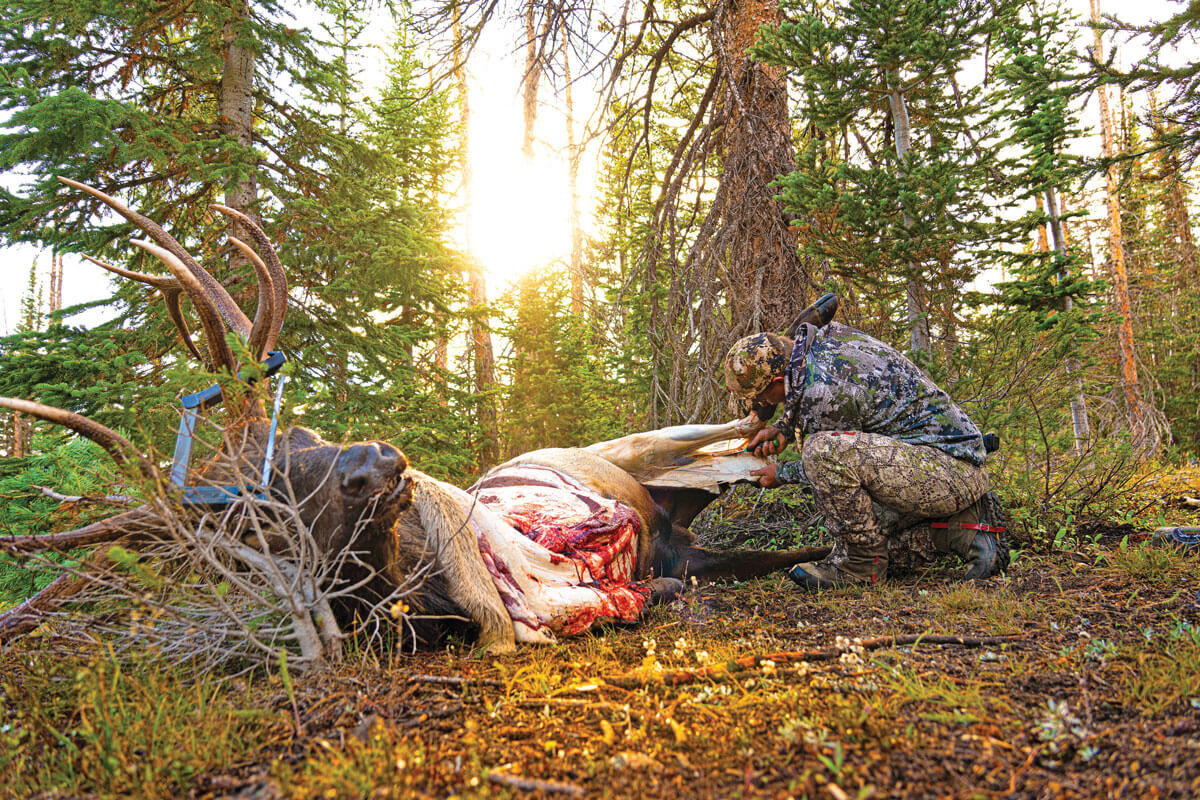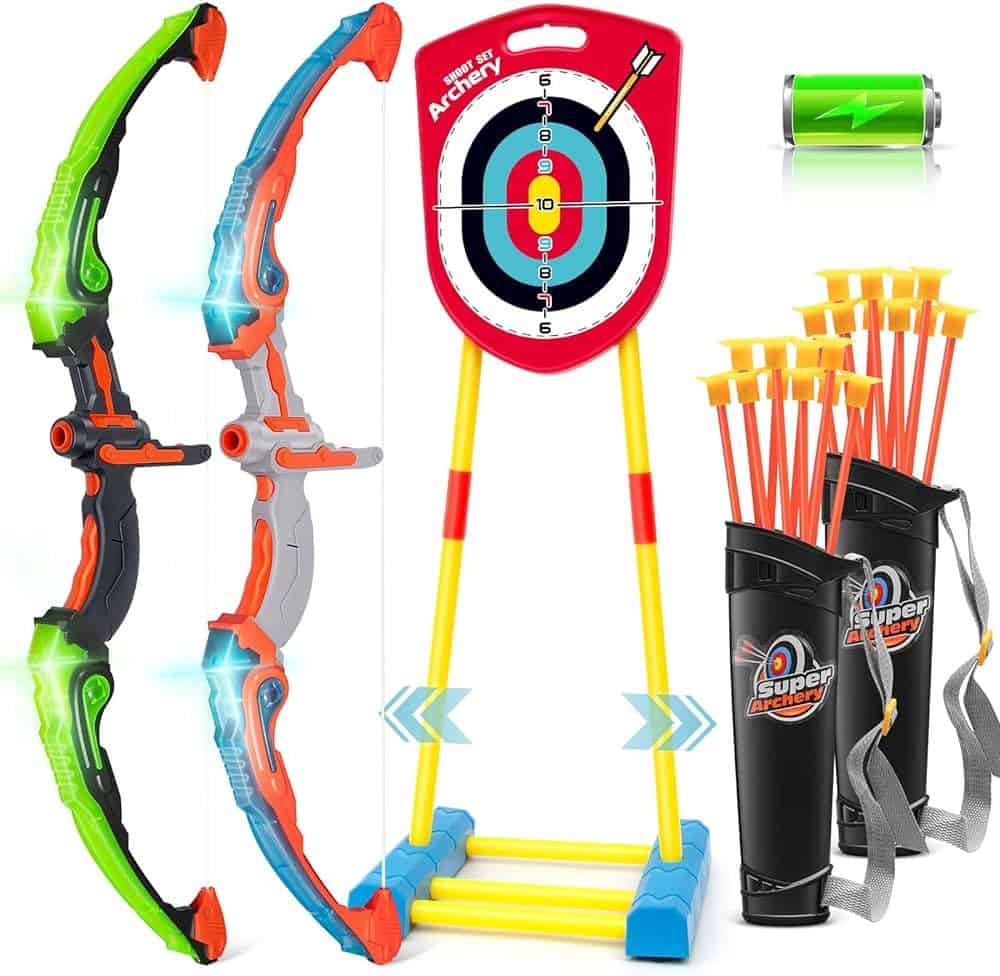Hunting moose with a bow requires precision and skill, ensuring a quick and ethical harvest. As a hunter, you must possess adept marksmanship and patience when pursuing these majestic creatures.
Moose hunting with a bow presents a challenging yet rewarding experience, allowing for a closer connection to nature and a deep sense of accomplishment. The quiet and intimate nature of bow hunting requires a deep understanding of the animal’s behavior and habitat.
In this guide, we will explore the techniques and strategies for successful moose hunting with a bow, emphasizing the importance of ethical hunting practices and conservation efforts. Join us as we delve into the world of bow hunting and the thrill of pursuing these magnificent beasts in their natural environment.
Contents
Choosing The Right Bow For Moose Hunting
Considerations For Bow Selection
Bow selection is crucial for hunting moose. Consider your experience level and the type of hunting terrain.
Select a bow with a draw weight of at least 50 pounds to ensure enough power to take down a large moose.
Opt for a bow with a longer axle-to-axle length for better stability and accuracy at longer distances.
Choose a compound bow for moose hunting for its power, accuracy, and faster arrow speeds.
Recommended Bow Features For Moose Hunting
- Ensure your bow has a let-off of at least 70% for easier holding at full draw.
- Select a sight with multiple pins for adjusting to different ranges while hunting moose in varied terrain.
- Opt for a durable and weather-resistant bow material like aluminum or carbon fiber for reliability in harsh conditions.

Credit: www.amazon.com
Perfecting Your Archery Technique
Stance And Posture
A good stance sets the stage for a successful shot. Keep your feet shoulder-width apart.
Stand perpendicular to your target with a slight bend in your knees.
Aiming And Release Techniques
When aiming, focus on your target and align your dominant eye with the arrow.
Practice a smooth release, ensuring minimal movement to maintain accuracy. “`
Scouting For Moose Habitat
Scouting for Moose Habitat is essential for a successful bow hunting expedition. Understanding the behavior of moose, along with identifying prime locations, is crucial for a fruitful hunting experience.
Understanding Moose Behavior
Moose are primarily solitary animals, but they do congregate in areas with abundant food and suitable habitat. Understanding their habits and territories can greatly improve the chances of a successful hunt.
Identifying Prime Moose Locations
Prime moose habitats are typically found near water sources such as lakes, rivers, and marshlands. Dense forest areas with ample vegetation and cover also attract these majestic creatures. Identifying these areas through thorough scouting is crucial for a successful hunt.

Credit: danieldefense.com
The Art Of Tracking And Stalking Moose
Hunting moose with a bow requires a unique set of skills, patience, and a deep understanding of the animals’ behavior. The art of tracking and stalking moose is a crucial aspect of a successful hunting expedition. In this section, we will explore effective tracking strategies and stalking techniques that will help you get closer to your target and increase your chances of a successful hunt. Let’s dive in!
Tracking Strategies
When it comes to tracking moose, it’s essential to follow a systematic approach that maximizes your chances of locating these majestic creatures. Here are some proven tracking strategies:
- Observe and analyze moose signs: Scan the area for moose tracks, droppings, rubs, and other signs that indicate their presence. Understanding these signs can give you valuable insights into their movement patterns and preferred habitats.
- Be aware of the wind direction: Moose have an excellent sense of smell, and any suspicion of your presence can send them running. Always position yourself downwind from the moose when following their tracks to avoid alerting them to your presence.
- Use binoculars and spotting scopes: These tools can be your best friends when tracking moose. Take advantage of their powerful optics to scan the surroundings for any moose sightings. This can save you time and energy while ensuring you don’t miss any potential opportunities.
- Study maps and terrain: Before heading out, familiarize yourself with the hunting area. Look for natural features such as water bodies, feeding areas, and clearings that serve as potential moose hotspots. This knowledge can help you narrow down your search and increase your chances of finding moose.
- Track fresh signs: Fresh moose signs, such as recently disturbed vegetation or wet tracks, indicate that the animal is nearby. Focus on tracking these signs to stay on the right path and maintain a steady pursuit.
Stalking Techniques
Once you have successfully tracked a moose and closed the distance, it’s time to implement effective stalking techniques to get within bow range. Here are some tried-and-true techniques:
- Move slowly and quietly: Moose have sharp hearing and can detect the slightest noise. Take small, deliberate steps, placing your feet gently on the ground to minimize noise. Slow and stealthy movements will prevent unnecessary disturbances that could alert the moose.
- Utilize natural cover: Use the surrounding terrain and vegetation to your advantage. Move from tree to tree, keeping them between you and the moose. This technique helps break up your silhouette and provides cover as you approach your target.
- Blend into the environment: Wear camouflage clothing that matches the natural colors and patterns of the environment. This will help you blend in seamlessly and make it harder for the moose to spot you.
- Constantly reassess the situation: As you stalk the moose, continuously evaluate the distance, wind direction, and any potential obstacles that may obstruct your shot. Adjust your approach accordingly to maintain the element of surprise.
Mastering the art of tracking and stalking moose with a bow takes time and practice. These techniques will undoubtedly enhance your hunting skills and bring you closer to a successful hunt. Remember, patience and perseverance are key in this art. Happy hunting!
Ethical Considerations And Regulations
Hunting moose with a bow is a thrilling adventure that requires a deep understanding of ethical considerations and adherence to regulations. Ethical hunting practices prioritize respect for wildlife and the environment, ensuring that the experience is not just about the pursuit of a trophy but also about conservation and sustainability.
Respecting Wildlife And Environment
Respecting wildlife and the environment is fundamental to ethical hunting. As hunters, we must recognize that we are entering the natural habitats of these magnificent creatures, and it is our responsibility to minimize our impact and protect their habitats.
- Minimize disturbance: When hunting moose, it’s crucial to minimize any disturbance to their natural behavior. This means keeping noise levels to a minimum and avoiding unnecessary disruptions.
- Proper disposal of waste: Dispose of waste responsibly by following local guidelines. This includes proper disposal of food waste, packaging, and any other trash generated during the hunting expedition.
- Preserve the environment: As ethical hunters, we must also be mindful of the overall environment. This involves observing and appreciating other flora and fauna in the area, not just the target species.
Understanding Hunting Laws And Guidelines
To ensure responsible and ethical hunting, it is crucial to understand and adhere to hunting laws and guidelines established by local authorities. These laws and guidelines are put in place to conserve wildlife populations, promote safety, and maintain a balanced ecosystem.
Here are a few essential considerations:
- Licensing and permits: Before embarking on a moose hunting expedition, hunters must obtain the necessary licenses and permits. These documents ensure that hunting activities are legal and regulated.
- Bag limits: Bag limits refer to the maximum number of animals that can be legally harvested. Adhering to bag limits is essential for preserving wildlife populations and maintaining a healthy ecosystem.
- Season restrictions: Hunting seasons are established to manage wildlife populations and minimize disturbance during sensitive periods, such as breeding or migration seasons. Understanding and respecting these restrictions is critical.
Complying with hunting laws and guidelines not only ensures that we are behaving ethically but also contributes to the long-term sustainability of moose populations and the preservation of their habitats.

Credit: www.bowhunter.com
Frequently Asked Questions On Hunting Moose With A Bow
Can I Hunt Moose With A Bow In All States?
Yes, you can hunt moose with a bow in many states, but regulations vary. Some states require a special tag or permit for bow hunting moose, while others only allow rifle hunting. Check the regulations in your state before planning your hunt to ensure you are in compliance.
What Type Of Bow Is Best For Hunting Moose?
When it comes to hunting moose with a bow, a compound bow is generally recommended. Its power and accuracy make it ideal for taking down large game like moose. However, it’s important to choose a bow with a high draw weight and familiarize yourself with shooting at longer distances to ensure a clean and ethical kill.
What Is The Best Time Of Year To Hunt Moose With A Bow?
The best time to hunt moose with a bow is during the rut, which typically occurs in the early fall. During this time, bulls are more active and vocal, making them easier to locate and approach. Additionally, the colder weather can help preserve the meat longer, especially if you are hunting in remote areas without easy access to refrigeration.
Conclusion
Hunting moose with a bow is a challenging and rewarding experience, requiring skill and patience. It allows for a deeper connection with nature and the animal kingdom. By following ethical hunting practices and regulations, hunters can contribute to conservation efforts while enjoying the thrill of the pursuit.
Happy hunting!



